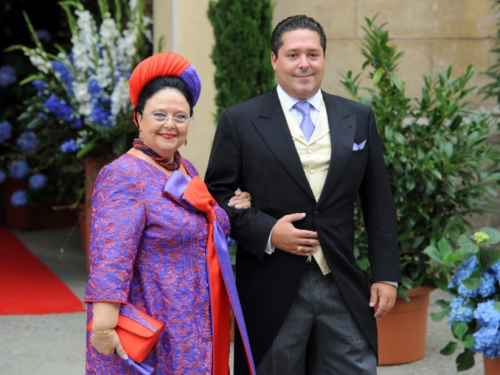Grand Duchess Maria Vladimirovna and her justified claim to the Imperial throne of Russia
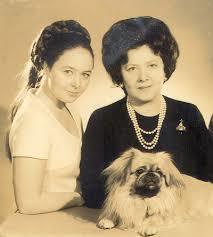 H.I.H Grand Duchess Maria Vladimirovna with her mother Grand Duchess Vladimir in Madrid.
H.I.H Grand Duchess Maria Vladimirovna with her mother Grand Duchess Vladimir in Madrid.
Grand Duchess Maria Vladimirovna attended the same school that I did in Madrid: Runnymede College where we prepared ourselves for our “O” and “A” Levels of Cambridge University. I have had the honour of knowing Her Imperial Highness since those days. I was invited to the baptism of her son and heir, Grand Duke George at their family home in Puerta de Hierro in Madrid. Their Majesties King Juan Carlos and Queen Sophia of Spain attended the celebration as the relationship between the Spanish Royal House and the Vladimirovichs has always been excellent. I only have praise for her and her work on behalf of the monarchy in Russia.
On the death of her father, Grand Duke Vladimir Kyrilovich in Miami on the 21 April 1992, she became the Head of the Imperial House of Russia though the Romanov Family Association do not recognize her as such, for reasons that in my opinion are mistaken and that will be discussed further on in my article. It is important to note as gestures are sometimes more important than words that His body was returned to Russia and he was buried with full pomp and splendour in the Peter and Paul Fortress in St. Petersburg , the first Romanov to be honoured in this way since before the revolution.
To be able to enter into what seems the complicated laws of succession to the Imperial throne we must turn to the Pauline Laws. The Pauline Laws are the house laws of the House of Romanov and the name comes from the fact that they were initially established by Emperor Paul I in 1797.
Tsar Paul I abolished Peter the Great’s law which allowed each reigning emperor or empress to designate his or her successor, substituting a strict order of succession by proclaiming that the eldest son of the monarch shall inherit the throne, and other dynasts according to primogeniture in the male-line. In so doing, Tsar Paul implemented a semi-Salic line of succession to the Russian throne: The throne could henceforth pass to a female and through the female (cognatic) line of the dynasty, upon the extinction of all legitimately-born, male dynasts.
The Pauline laws established a very strict marriage policy by which only marriages approved by the Tsar and to members of a Royal or Ruling family, were considered dynastic and acceptable. I suggest you read further details on this matter by clicking on the following link:
http://https://www.wikiwand.com/en/Pauline_Laws
After the forced abdication of Nicholas II on the 15th March 1917 of the throne in his name and that of his son, his brother Grand Duke Michael was proclaimed “Emperor Michael II,” to Russian troops and in cities throughout Russia but the new Emperor deferred to the will of the people and acknowledged the Provisional Government as the de facto executive, but neither abdicated nor refused to accept the throne. In his statement he said:
“Inspired, in common with the whole people, by the belief that the welfare of our country must be set above everything else, I have taken the firm decision to assume the supreme power only if and when our great people, having elected by universal suffrage a Constituent Assembly to determine the form of government and lay down the fundamental law of the new Russian State, invest me with such power.
Calling upon them the blessing of God, I therefore request all the citizens of the Russian Empire to submit to the Provisional Government, established and invested with full authority by the Duma, until such time as the Constituent Assembly, elected within the shortest possible time by universal, direct, equal and secret suffrage, shall manifest the will of the people by deciding upon the new form of government.”
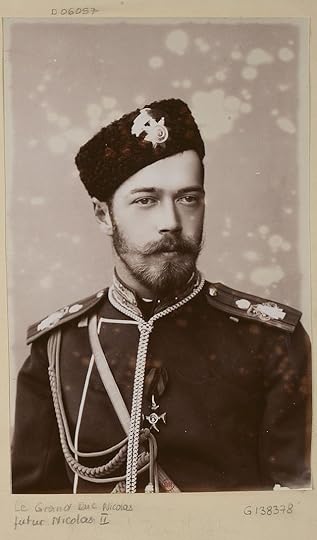 His Majesty Tsar Nicholas II when he was Tsarevich
His Majesty Tsar Nicholas II when he was Tsarevich
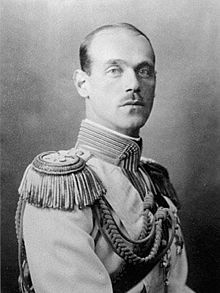 Grand Duke Michael Alexandrovich, brother of Tsar Nicholas II and proclaimed Tsar Michael II
Grand Duke Michael Alexandrovich, brother of Tsar Nicholas II and proclaimed Tsar Michael II
After the fall of the monarchy and the disappearance of Tsar Nicholas II and his family in Ekateringburg (I am yet to be convinced without a doubt of the generally accepted official version of the assassination and its important to not forget that the Russian Orthodox Church to this day has not recognized the authenticity of the remains and declined to attend the reburial ceremony in 1998 ), Grand Duke Nikolaievich was proclaimed as the emperor of all Russia by the Zemsky Sobor of the Priamursk Region by the Provisional Priamurye Government which controlled portions of the Russian Far East, convened in Vladivostok by General Mikhail Diterikhs who appreciated his career as general and former commander-in-chief, and his position as the oldest member of the imperial dynasty. At the time, Grand Duke Nicholas was already living abroad and consequently was not present at the Sobor. Two months later the Priamursk region fell to the Bolsheviks thus his rule was nominal as he was living in exile during the entirety of his reign that ended when he died in 1929 without issue. In any case Dowager Empress Maria Feodorevna who was living in exile Denmark did not take seriously this proclamation as she believed until her death on the 13th October 1928 that Her son and grandchildren had not been murdered.
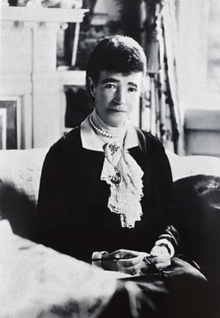 Her Imperial Majesty Dowager Empress Maria Feodorovna in Denmark after the fall of the monarchy.
Her Imperial Majesty Dowager Empress Maria Feodorovna in Denmark after the fall of the monarchy.
Despite, the Dowager Empress’ believes, camps started to be formed in the monarchist movement, where Paris was a focal location. Several monarchists grouped around Grand Duke Cyril Vladimirovich, who was first in the line of succession by male primogeniture after the alleged murder of Tsar Nicholas II, Tsareich Alexei and Grand Duke Michael Alexandrovich. Many of Cyril’s opponents grouped around a young Grand Duke Dimitri Paulovich, who was next in the line of succession if Cyril and his brothers, the Vladimirovichi, were ineligible (Paul Alexandrovich, who had been ahead of Dmitri, had been killed in 1919), but Dimitri himself refused these advances, supporting instead Grand Duke Cyril as emperor. In any case neither for this reason neither Grand Duke Nikolai Nikolaievich or Grand Duke Dimitri Paulovich proclaimed there rights to the throne out of respect to the feelings of the Dowager Empress but Cyril
 Grand Duke Kyril Vladimirovich who proclaimed himself Tsar Kyril I on the 31st August 1924.
Grand Duke Kyril Vladimirovich who proclaimed himself Tsar Kyril I on the 31st August 1924.
Vladimirovich assumed on 8 August 1922 the position of curator of the throne and on 31 August 1924 he proclaimed himself Kyril I, Emperor of all the Russias. With the assumption of the Imperial title his children were elevated to the title and styles of Grand Duke and Grand Duchesses of Russia according to the Statutes of the Imperial Family and the Laws of the Russian Empire. Grand Duke Kyril’s role as head of the House was recognized, and the oath of loyalty signed by every male dynast of the House of Romanov, except Grand Duke Nicholas, his brother Grand Duke Peter, and the latter’s son, Prince Roman Petrovich. Tsar Kyril held his court-in-exile in France, erecting a secretariat for the monarchist movement until his death in 1938 when his only son, Grand Duke Vladimir Kirillovich, succeeded him though he chose to assume the title of “Grand Duke” rather than that of Emperor. Sadly for the family this succession would be surrounded by controversy and to understand the reason for the controversy instigated by the Romanov Family Association we must go back to the Pauline Laws.
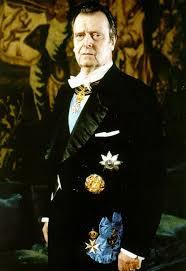 His Imperial Highness Vladimir Kyrilovich Romanov, Grand Duke of Russia
His Imperial Highness Vladimir Kyrilovich Romanov, Grand Duke of Russia
As mentioned previously the Pauline Laws were very strict in regard to dynastic marriages and the laws provide for succession by both male and female dynasts and establishing male-preference primogeniture. This means that succession to the throne (or headship of the dynasty) passes by primogeniture to the senior male dynast. At the death of the last male dynast, the succession passes to the female dynast most closely related to the last emperor.
Grand Duke Vladimir married Princess Leonida Georgievna Bagration-Moukhransky on the 13th August 1948 in Lausanne. The Pauline Laws dictated that only those born of a dynastic marriage between a Romanov dynast and a member of a “royal or sovereign house”, were included in the Imperial line of succession; children of morganatic or unequal marriages were ineligible to inherit the throne or dynastic status. For the supporters of Grand Duke Vladimir he was the sole male dynast of the Imperial House to enter into an equal marriage after the 1917 revolution but his opponents refuted the equality of this marriage and they do so to this day.
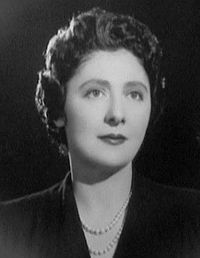 Her Imperial Highness Grand Duchess Leonida at the time of her marriage.
Her Imperial Highness Grand Duchess Leonida at the time of her marriage.
The family to which Princess Leonida belonged, the Bagrationi dynasty, had been kings in Georgia from the medieval era until the early 19th century, but no male line ancestor of hers had reigned as a king in Georgia since 1505 and her branch of the Bagrations, the House of Mukhrani, had been naturalised among the non-ruling nobility of Russia after Georgia was annexed to the Empire in 1801. Yet the royal status of the House of Bagration had been recognized by Russia in the 1783 Treaty of Georgievsk and was confirmed by Vladimir Kirillovich on 5 December 1946 as head of the Russian imperial house. Therefore this controversy fueled by some members of the family, has no legal standing specially in view that the Republic of Georgia later recognized the Bagrations as their royal family and invited the head of the family back to Georgia. This means that it is a fact that Grand Duke Vladimir Kyrilovich was the sole male dynast of the Imperial House to enter into an equal marriage after the revolution.
In any case in 1946 in his capacity of Head of the Russian Imperial Family, Grand Duke Vladimir recognised the Moukhransky branch of the House of Bagration as a former Royal dynasty and he declared his 1948 marriage to Princess Leonida to be dynastic, notwithstanding her family’s status as Russian subjects at the end of the monarchy. From the time of their marriage in 1948 she assumed her husband’s rank, bearing the title Grand Duchess of Russia and the style Her Imperial Highness.
For further information on this please click on the following link:
In 1969 Grand Duke Vladimir, expressing his opinion that the House of Romanov faced almost inevitable extinction in the dynastic male line, proclaimed his daughter Grand Duchess Maria Vladimirovna the future curatrix of the throne, implying that she would ultimately succeed.
In 1989, when Prince Vasili Alexandrovich of Russia (who was also the President of the Romanov Family Association, died, Grand Duke Vladimir proclaimed his daughter as the dynasty’s heiress, as Prince Vasili was the last male Romanov other than himself whom, having been born of an equal marriage, was recognized as a dynast.
For nearly two centuries, from the accession of Emperor Paul I in 1796 to the death of Grand Duke Wladimir in 1992, male dynasts held the throne or headship of the dynasty, based on primogeniture. Due to the numerous non-dynastic marriages that occurred after the Revolution of 1917, the male dynasts of the Imperial House grew smaller in number as the years passed and finally died out in 1992 when Grand Duke Vladimir Kirillovich died in 1992. With no existing male dynasts, Maria Vladimirovna assumed the position of Head of the House as “de jure” Empress and proclaimed her son George Mikhailovich as heir-apparent. Since that day she has worked tirelessly to promote the sentiment of monarchy in Russia with great success.
Her Imperial Highness Maria Vladimirevna Romanov, Grand Duchess of Russia
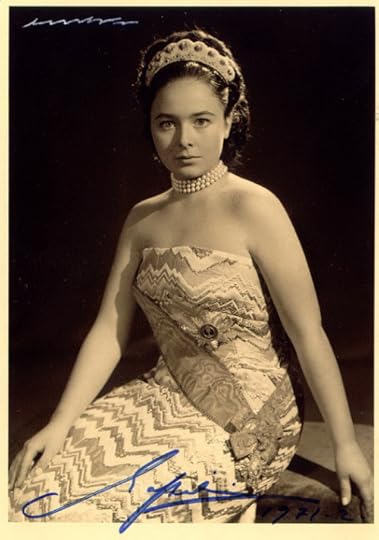 Her Imperial Highness Grand Duchess Maria Vladirmirevna on her dynastic coming of age on her 16th birthday.
Her Imperial Highness Grand Duchess Maria Vladirmirevna on her dynastic coming of age on her 16th birthday.
The Grand Duchess was born in Madrid, where her parents resided since the end of the II World War. Her godfather was H.R.H Prince Nicholas of Romania and her godmother,Queen Ioanna of Bulgaria. She was educated in Madrid and Paris, before studying Russian history and literature at Oxford University and is fluent in Russian, English, French and Spanish, and also speaks some German, Italian and Arabic.
On 23 December 1969, upon reaching her dynastic majority, Grand Duchess Maria swore an oath of loyalty to her father, to Russia, and to uphold the Fundamental Laws of Russia which governed succession to the Imperial throne. At the same time, her father issued a controversial decree recognizing her as heiress and declaring that, in the event he predeceased other dynastic Romanov males, then the Grand Duchess would become the “Curatrix” “of the Imperial Throne until the death of the last male dynast. The heads of the other branches of the imperial family, declared that Grand Duke Vladimir’s actions were not legal but as it happened he outlived all the other male Romanov dynasts, and thus Grand Duchess Maria had no occasion to assume curatorship but directly became “de jure” Empress of Russia.
According to the Russian Legitimist Organization as there are no male dynasts, the succession to the headship of the dynasty has passed legally passed to Grand Duchess Maria Wladimirovna because she is the surviving female dynast most closely related to the last emperor, Tsar Nicholas II (or Michael II) but The Romanov Family Association is not in agreement with this point of view or this interpretation of the Pauline Laws.
On 22 September 1976, the Grand Duchess married His Royal and Imperial Highness Prince Franz Wilhelm of Prussia, her third cousin, once-removed. He is a great-grandson of Germany’s last emperor, Kaiser Wilhelm II and a great-great-great grandchild of Queen Victoria of the United Kingdom. Franz Wilhelm converted to the Orthodox faith prior to the wedding, taking the name Michael Pavlovich and receiving the title of a Grand Duke of Russia from Grand Duke Vladimir.
The couple separated in 1982, a year after the birth of their only child, George Mikhailovich, who had been granted the title Grand Duke of Russia at birth by his grandfather.
 Grand Duchess Vladimir with her husband Grand Duke Vladimir and Grand Duke George Mikhailovich and his mother Grand Duchess Maria Vladimirevna.
Grand Duchess Vladimir with her husband Grand Duke Vladimir and Grand Duke George Mikhailovich and his mother Grand Duchess Maria Vladimirevna.
The “de jure” Empress hopes for the restoration of the monarchy someday and is “ready to respond to a call from the people”. When questioned about the ongoing rift among Romanov descendants, the Empress said:
“Attempts to disparage my rights have originated with people who, firstly, do not belong to the Imperial Family, and, secondly, either do not themselves know the relevant laws or think that others do not know these laws. In either case, there is unscrupulousness at work. The only thing that causes ne regret is that some of our relatives waste their time and energy on little intrigues instead of striving to be of some use to their country. I have never quarreled woth anyone about these matters and I remain open to discussions and cooperation with all, including, of course, my relatives.But there can be no foundation for cooperation without respect four our dynastic laws, fulfilling these laws, and following our family traditions”
Despite the dispute between Grand Duchess Maria and the Romanov Family Association the reality is that she is acknowledged as Head of the Russian Imperial House by all the European Royal Houses.
 Grand Duchess Maria Vladimirevna with Her Majesty Queen Elisabeth II at the Ivy in London
Grand Duchess Maria Vladimirevna with Her Majesty Queen Elisabeth II at the Ivy in London
 The “de jure” Empress of Russia, with her son Tsarevich George and His Majesty Tsar Simeon of Bulgaria and His Majesty King Michael of Romania.
The “de jure” Empress of Russia, with her son Tsarevich George and His Majesty Tsar Simeon of Bulgaria and His Majesty King Michael of Romania.
The Romanov Family Association
In 1979, seven undisputed male and female dynasts founded the Romanov Family Association (RFA), which by the end of the same year had admitted more than half of the surviving undisputed dynasts into its membership, as well as a fair number of those male-line descendants that Grand Duke Vladimir did not recognize as dynasts because of morganatic birth. Grand Duke Vladimir Kyrillovich never joined the association and neither has Grand Duchess Maria.
The RFA, which included the last two surviving females recognised as dynasts among its membership, chose Prince Nicholas Romanov, as its president in 1989, following the death of Prince Vasili Alexandrovich of Russia, the only undisputed male dynast still living at that time other than Grand Duke Vladimir Kirillovich. The RFA’s official position, expressed in its founding charter, is that the Russian nation should determine which sort of government its people desire and, if the choice is monarchy, who should be monarch. Nonetheless, once Grand Duke Vladimir was no longer alive, they recognized Prince Nicholas Romanov as the head of the Imperial House of Romanov while serving as third president of the RFA. Nicholas took ” His Highness Prince of Russia” as his his title following the death of Grand Duke Vladimir Kyrillovich.
After Nicholas’ death in 2014, his brother Prince Dimitri Romanov took up the claim. In July 2009 Dimitri had affirmed that his brother Nicholas, and not Grand Duchess Maria Vladimirovna, was the Head of the Imperial Family, simultaneously declaring, however, that pursuant to a 1992 family meeting he attended in Paris, all of the then living senior male descendants of the House of Romanov agreed not to put forward any claim. Prince Dimitri died childless in 2016, extinguishing the asserted claims of the Romanovs of the Nikolayevich branch with the death of the last male of that line. A sad and unnecessary family dispute!
Conclusions
In my opinion the only member of the Romanovs that has been educated and prepared for her position has been Grand Duchess Maria Vladimirevna. Since she became Head of the Imperial House she has worked tirelessly to promote the restoration of the monarchy in Russia. Thanks to her efforts and with the help of her son and heir presumptive, Grand Duke George Mikhailovich she has been accepted by most of the royalist parties as Head of the Imperial House and is recognized as such by the Russian government and in March 2013, her claim was recognized by the head of the Russian Orthodox Church, Kyrill I, Patriarch of Moscow and all Russia and this has drawn further supporters among Russians to her cause and the possibility of the restoration of the monarchy. In an interview, the patriarch firmly rejected the claims of the other Romanov descendants and stated, “Today, none of those persons who are descendants of the Romanovs are pretenders to the Russian throne. But in the person of Grand Duchess Maria Vladimirevna and her son, George, the succession of the Romanovs is preserved — no longer to the Russian Imperial throne, but to history itself.”
 The “de jure” Empress of Russia
The “de jure” Empress of Russia
Links:
http://www.russianlegitimist.org/
http://www.imperialhouse.ru/en/

